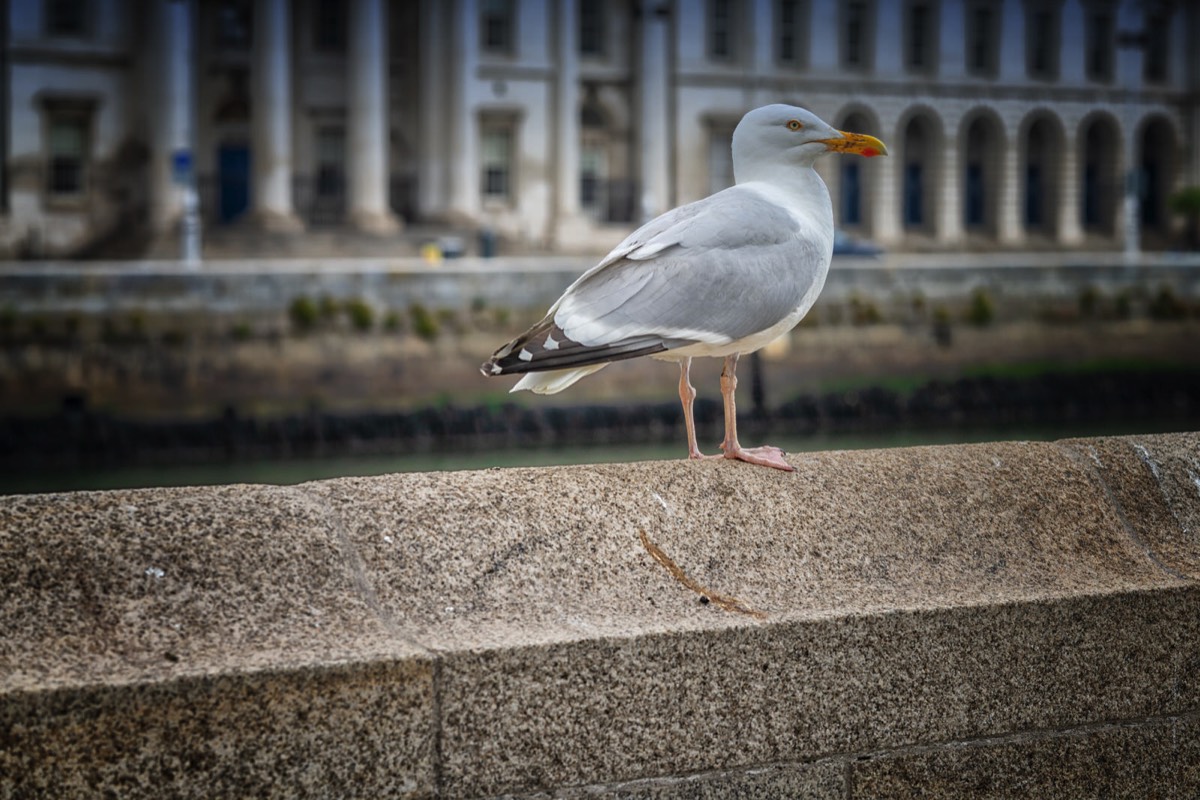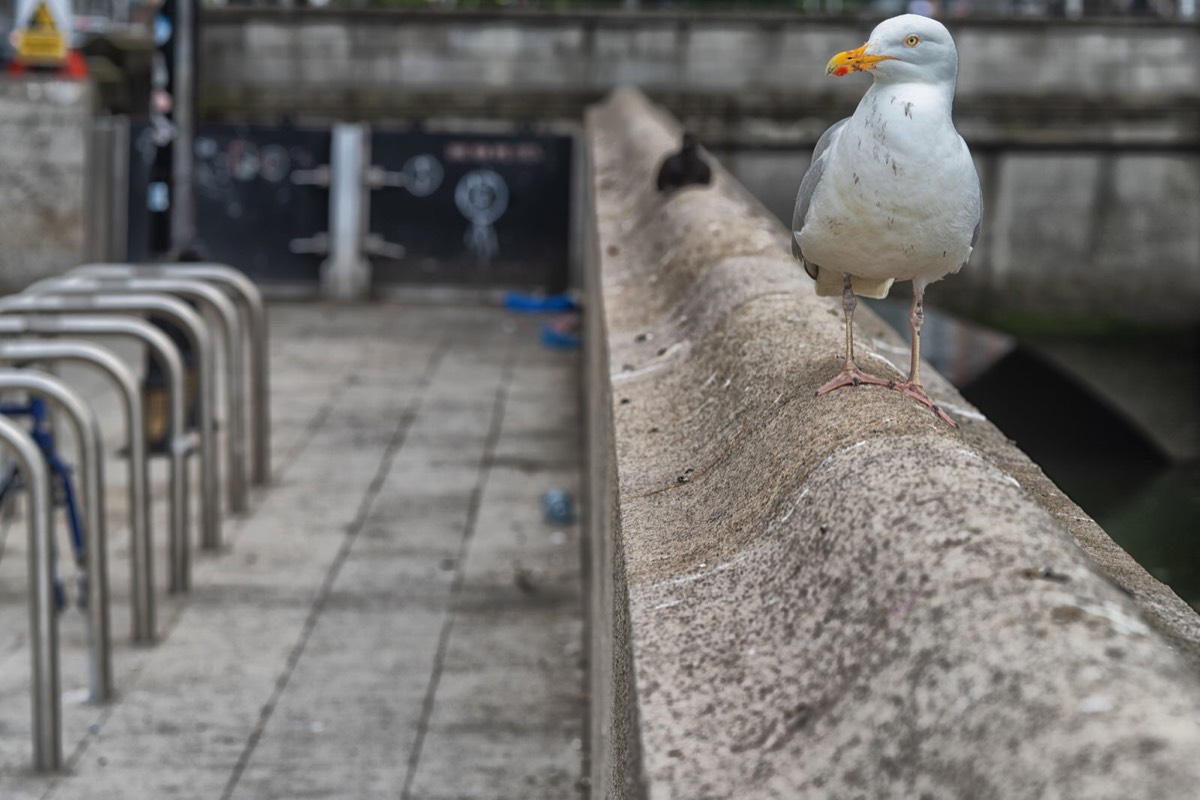HERRING GULL ON WALL
Herring gulls – the most abundant roof-nesting species in Dublin – are presently red-listed.
As a street photographer I have been harassed by aggressive gulls but I am totally against them being culled as has been suggested by some. To be honest I do like them but I do not feed them.
Dublin City Council does not have a role in controlling seagulls but their officials strongly advises people not to feed the gulls as this influences the interactive behaviour between birds and humans.
Since the 1940s, some herring and lesser black-backed gulls have used rooftops for nesting. It's not known exactly what prompted this move, but abundant inland sources of food and safe, predator-free nesting sites on rooftops were definite factors.
The 1956 Clean Air Act prevented rubbish tip operators burning waste, so gulls took advantage of the huge amount of organic material increasingly generated by our 'throw-away' society and sent to landfill. Many urban streets are also frequently replete with discarded food and accessible rubbish and some people feed gulls.
The birds nesting on roofs of houses are most likely to be herring gulls, whilst lesser black-backed gulls tend to concentrate on the larger expanses of industrial or commercial buildings with flat roofs. Although numbers of roof-nesting gulls, especially lesser black-backed gulls, are still increasing, the overall population of herring gulls is plummeting, making them a red list species. The lesser black-backed gull population has also declined in recent years.
Government licences allow the killing of urban gulls only as a last resort, where a significant risk to public health or safety has been identified. While it is appreciated that roof-nesting gulls can cause problems,the RSPB questions the appropriateness of lethal control on a declining, red-listed species and highlight the need to comply with European bird protection law.
Furthermore, it is extremely difficult to distinguish between the nests, eggs or downy chicks of herring and lesser black-backed gull - even fledged young look identical to all but an expert eye. This makes species-specific control measures difficult.
As a street photographer I have been harassed by aggressive gulls but I am totally against them being culled as has been suggested by some. To be honest I do like them but I do not feed them.
Dublin City Council does not have a role in controlling seagulls but their officials strongly advises people not to feed the gulls as this influences the interactive behaviour between birds and humans.
Since the 1940s, some herring and lesser black-backed gulls have used rooftops for nesting. It's not known exactly what prompted this move, but abundant inland sources of food and safe, predator-free nesting sites on rooftops were definite factors.
The 1956 Clean Air Act prevented rubbish tip operators burning waste, so gulls took advantage of the huge amount of organic material increasingly generated by our 'throw-away' society and sent to landfill. Many urban streets are also frequently replete with discarded food and accessible rubbish and some people feed gulls.
The birds nesting on roofs of houses are most likely to be herring gulls, whilst lesser black-backed gulls tend to concentrate on the larger expanses of industrial or commercial buildings with flat roofs. Although numbers of roof-nesting gulls, especially lesser black-backed gulls, are still increasing, the overall population of herring gulls is plummeting, making them a red list species. The lesser black-backed gull population has also declined in recent years.
Government licences allow the killing of urban gulls only as a last resort, where a significant risk to public health or safety has been identified. While it is appreciated that roof-nesting gulls can cause problems,the RSPB questions the appropriateness of lethal control on a declining, red-listed species and highlight the need to comply with European bird protection law.
Furthermore, it is extremely difficult to distinguish between the nests, eggs or downy chicks of herring and lesser black-backed gull - even fledged young look identical to all but an expert eye. This makes species-specific control measures difficult.


As an Amazon Associate I earn from qualifying purchases
You will find links to buy products from Amazon, Google and other partners. If you click on these links, you’ll find that the URL includes a small extra piece of text which identifies that the click came from my websites. This text is an affiliate code, and it means that I get a small percentage of the money you spend if you choose to buy that product, or, in some cases, other products from the site soon after. These affiliate links help pay the costs of producing my websites and ensure that the content is free to you.